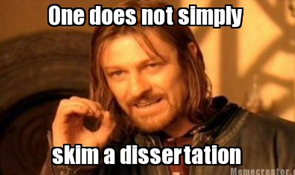If you can believe it, this former Composition 101
instructor probably spends more time in an Excel spreadsheet than he does in a
Word doc. I’m not sure how many writing center directors can say that, but
there it is.
You see, part of my job is determining who you, our users,
are—what programs you’re enrolled in, what writing center services you use, and
how you heard about us. These data help inform services, new and old, and make
sure that we are providing the kind of support you want and need.
Anyway, I thought it might be fun if I shared a bit about who
you are and who and what you use in the Walden Writing Center. For instance,
did you know that the writing center’s instructors review close to 1,000
student papers a month (twice as many papers as there are seats on a 747)? Or that
students in our education programs are our biggest users? (We serve more
education students monthly than there are people who live in
Potlatch, Idaho.)
Here are a few other eye-opening statistics:
- Nearly
28% of the student body at Walden will use a writing center service at least
once per quarter. (That’s almost 12,000 students, roughly the population of Cuba!)
- Our website sees
over 3 million hits a year.
- Over 800 students attend our webinars a month. (That’s
the equivalent of every current NBA player attending a webinar… twice.)
- Walden Writing Center staff (29
full timers) hold nearly 60 degrees.
- It can take a dissertation editor almost 12 hours to
complete a form-and-style review (as long as all three Lord of the Rings movies combined or a flight from Denver to Tokyo).
- The
center’s social
media services reach over 480,000
people a year (close to Graceland’s annual attendance).
- Walden students submit nearly 90,000 drafts a month to
Grammarly. (If everyone in Cowboy Stadium submitted one paper to Grammarly,
they still wouldn’t submit as much as Walden does in a given month.)
If there’s a point to all this—and I hope there is—it’s that
you use us…a lot…and in a lot of different ways. And if you aren’t accessing
all of these services, please do. They’re there—and popular—for a reason.
 ---------------------------------------------------------------------------------------------------------------------
---------------------------------------------------------------------------------------------------------------------
Writing Center Director Brian Timmerman's research interests are "focused on ludology, game theory, and narrative in interactive lit." He advises students to investigate the broader context of a topic, rather than just presenting it in isolation.















3 comments :
Post a Comment